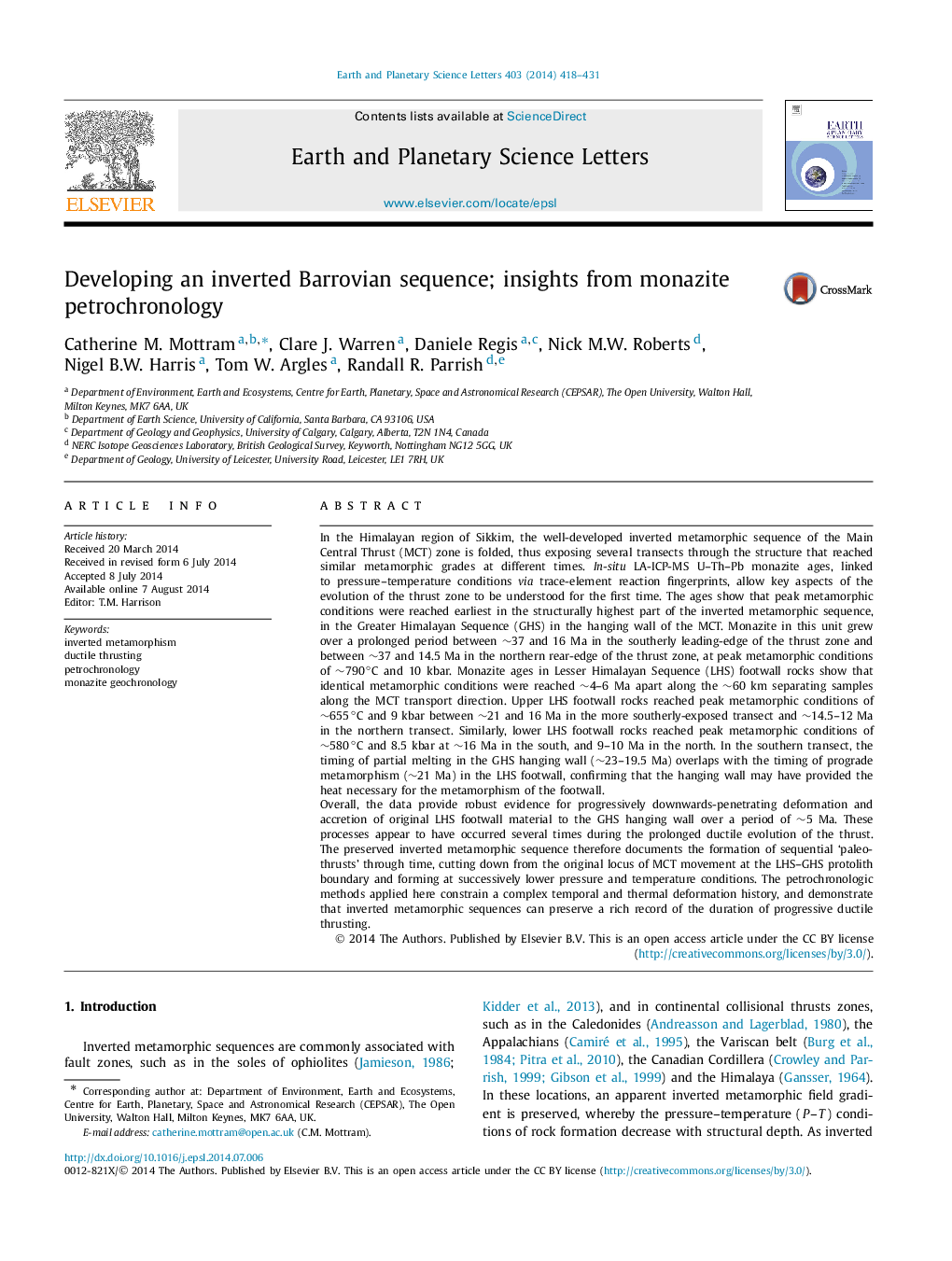| کد مقاله | کد نشریه | سال انتشار | مقاله انگلیسی | نسخه تمام متن |
|---|---|---|---|---|
| 6429158 | 1634753 | 2014 | 14 صفحه PDF | دانلود رایگان |

- The Main Central Thrust, a major Himalayan structure, developed in the Sikkim Himalaya between â¼21 and 9 Ma.
- Inverted metamorphic zone preserves paleo-thrusting history.
- Active Main Central Thrust cut down-section over time.
- Melting in the hanging wall was coeval with burial in the footwall rocks.
- Trace element fingerprinting facilitates linking monazite age to metamorphic stage.
In the Himalayan region of Sikkim, the well-developed inverted metamorphic sequence of the Main Central Thrust (MCT) zone is folded, thus exposing several transects through the structure that reached similar metamorphic grades at different times. In-situ LA-ICP-MS U-Th-Pb monazite ages, linked to pressure-temperature conditions via trace-element reaction fingerprints, allow key aspects of the evolution of the thrust zone to be understood for the first time. The ages show that peak metamorphic conditions were reached earliest in the structurally highest part of the inverted metamorphic sequence, in the Greater Himalayan Sequence (GHS) in the hanging wall of the MCT. Monazite in this unit grew over a prolonged period between â¼37 and 16 Ma in the southerly leading-edge of the thrust zone and between â¼37 and 14.5 Ma in the northern rear-edge of the thrust zone, at peak metamorphic conditions of â¼790â°C and 10 kbar. Monazite ages in Lesser Himalayan Sequence (LHS) footwall rocks show that identical metamorphic conditions were reached â¼4-6 Ma apart along the â¼60 km separating samples along the MCT transport direction. Upper LHS footwall rocks reached peak metamorphic conditions of â¼655â°C and 9 kbar between â¼21 and 16 Ma in the more southerly-exposed transect and â¼14.5-12 Ma in the northern transect. Similarly, lower LHS footwall rocks reached peak metamorphic conditions of â¼580â°C and 8.5 kbar at â¼16 Ma in the south, and 9-10 Ma in the north. In the southern transect, the timing of partial melting in the GHS hanging wall (â¼23-19.5 Ma) overlaps with the timing of prograde metamorphism (â¼21 Ma) in the LHS footwall, confirming that the hanging wall may have provided the heat necessary for the metamorphism of the footwall.Overall, the data provide robust evidence for progressively downwards-penetrating deformation and accretion of original LHS footwall material to the GHS hanging wall over a period of â¼5 Ma. These processes appear to have occurred several times during the prolonged ductile evolution of the thrust. The preserved inverted metamorphic sequence therefore documents the formation of sequential 'paleo-thrusts' through time, cutting down from the original locus of MCT movement at the LHS-GHS protolith boundary and forming at successively lower pressure and temperature conditions. The petrochronologic methods applied here constrain a complex temporal and thermal deformation history, and demonstrate that inverted metamorphic sequences can preserve a rich record of the duration of progressive ductile thrusting.
Journal: Earth and Planetary Science Letters - Volume 403, 1 October 2014, Pages 418-431